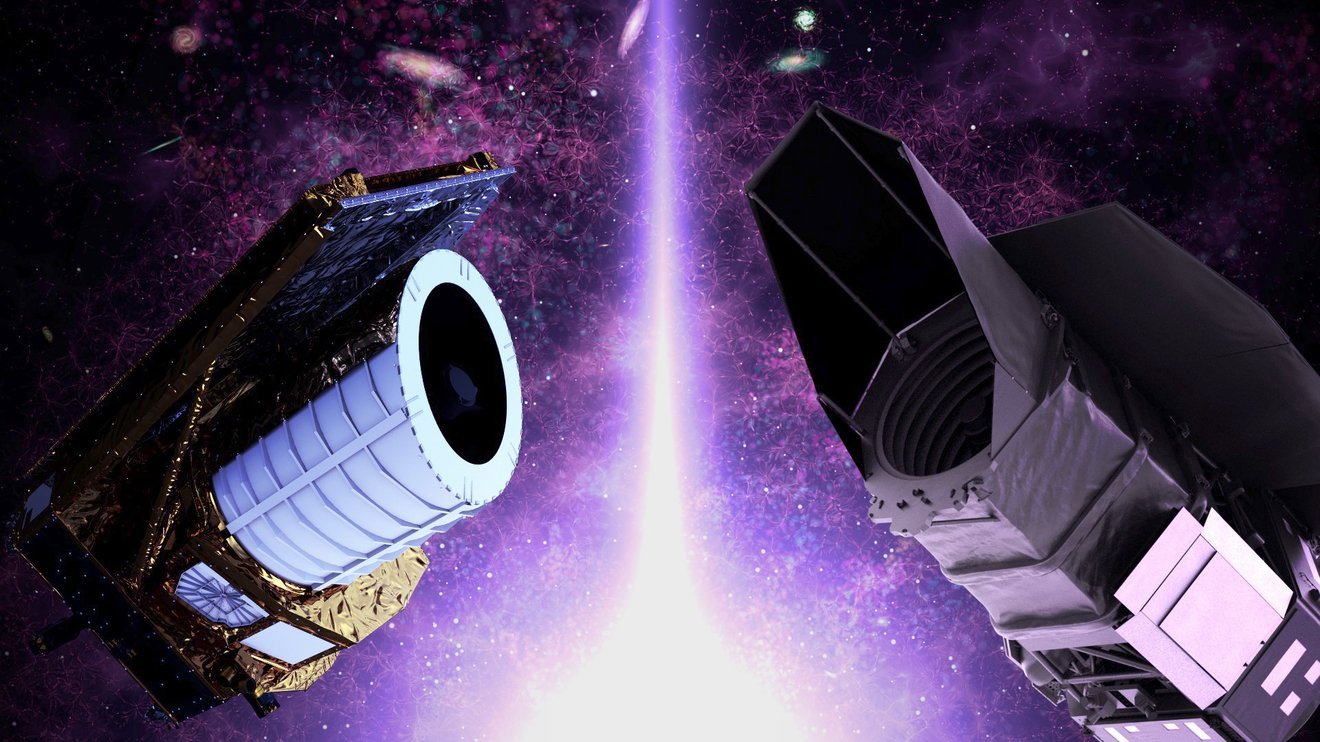An unknown form of energy, recognized only through indirect observations of distant celestial phenomena, is believed to play a significant role in the mechanics of our universe. This mysterious force, known as dark energy, is believed to be what causes the cosmic acceleration observed by astronomers, a fundamental property of our universe that may offer clues about its origins and nature.
NASA’s Jet Propulsion Laboratory senior research scientist Jason Rhodes calls this “one of the most pressing mysteries in astrophysics,” one that has baffled astronomers and astrophysicists now for the last quarter of a century.
However, Rhodes and his colleagues may soon finally be able to solve this persistent cosmic riddle, with help from a pair of next-generation space telescopes that will go in search of answers to the mystery of dark matter and its role in the cosmic acceleration driving the expansion of our universe.
This July, the European Space Agency’s Euclid telescope will be launched into orbit and aims to provide potentially crucial new data about the universe’s expansion. Joining it in 2027, NASA’s Nancy Grace Roman Space Telescope will follow suit, joining the ESA’s telescope to aid in expanding our understanding of the mysterious role that dark matter plays in cosmic acceleration.
For scientists like Rhodes, understanding the nature of dark matter is one of the most pressing objectives in modern astrophysics. Not only could a deeper understanding of dark energy reveal clues about the structure and evolution of the universe, the new telescopes Roman, of which he is a deputy project scientist, and Euclid, for which he serves as U.S. science lead, could potentially reveal “a new era of exploration into this mystery.”
Among the questions Rhodes and his NASA and ESA colleagues have includes whether there are other forces acting on the cosmic acceleration, a discovery which, if confirmed, could reveal the presence of an unknown additional form of energy. By contrast, many cosmologists have proposed that there could be limitations to our currently accepted ideas about gravity.
Although both the new telescopes will study the unknown force behind cosmic acceleration, each will contribute in different ways. As a visible to near-infrared space telescope, Euclid’s mission will involve large-scale observations covering approximately one-third of the sky visible from Earth in optical wavelengths, as well as infrared.
By comparison, Roman will be equipped with its Wide Field Instrument, allowing a field of view up to 100 times that which is currently visible with the Hubble Space Telescope’s infrared instrument, allowing it to measure light from close to a billion galaxies and search for thousands of potential exoplanets. Its other primary instrument, the Coronagraph, will also support the search for exoplanets by providing high-contrast imaging and spectroscopy.
While Euclid’s view of the sky will be far greater, Roman will provide a detailed view spanning around one-twentieth of the sky to reveal features of the early universe as it appeared when our universe was just 2 billion years old.
One area where both telescopes will provide key data about the accumulation of matter involves their employment of weak gravitational lensing to observe distortions in light. Euclid and Roman will study the smaller distorted areas revealed by gravitational lensing to map the universe’s dark matter in 3D, allowing scientists to better visualize the effects it has on cosmic acceleration.
In addition to mapping dark matter across the universe, the joint effort between the ESA and NASA will also search for new patterns in the distribution of galaxies and understand variances in galactic clustering over time, which also will provide key insights that will allow astronomers to test the influence of gravity in these areas of the universe.
Caltech scientist Yun Wang, a senior research scientist whose focus with Euclid and Roman involves the clustering of galaxies, says that combining the data collected with both telescopes “will give astronomers a better sense of what’s actually going on in the universe.”
The combined data collected by Roman and Euclid will provide information that could help scientists discern whether there are problems with our current conception of gravity and whether there could be additional energy behind the observed cosmic acceleration.
Ultimately, it may also help resolve scientists’ questions about dark energy, thereby potentially resolving the longstanding mystery of cosmic acceleration.
Micah Hanks is the Editor-in-Chief and Co-Founder of The Debrief. He can be reached by email at micah@thedebrief.org. Follow his work at micahhanks.com and on Twitter: @MicahHanks.

